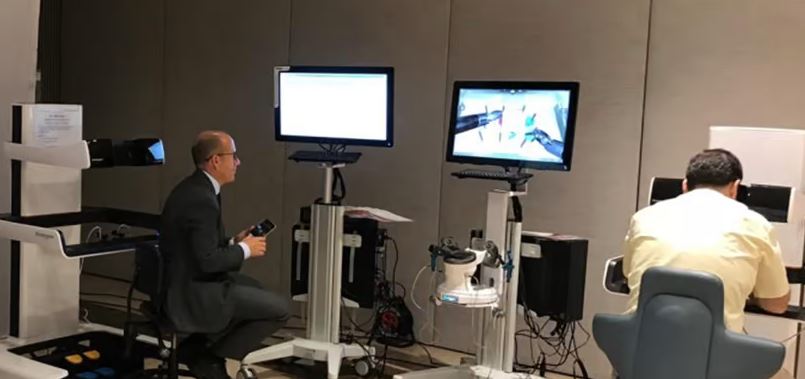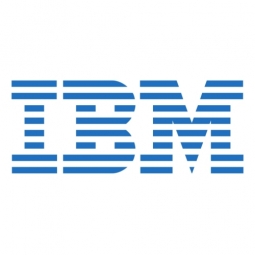Customer Company Size
Large Corporate
Region
- America
Country
- United States
Product
- IBM Global Technology Services
- Gigabit Passive Optical Network (GPON)
Tech Stack
- GPON technology
- Advanced Encryption Standard (AES)
Implementation Scale
- Enterprise-wide Deployment
Impact Metrics
- Cost Savings
- Productivity Improvements
- Digital Expertise
Technology Category
- Networks & Connectivity - Ethernet
- Networks & Connectivity - Network Management & Analysis Software
Applicable Industries
- Education
Applicable Functions
- Business Operation
Use Cases
- Campus Area Network
- Infrastructure Inspection
Services
- Cloud Planning, Design & Implementation Services
- System Integration
About The Customer
The White Plains School District is a suburban community located north of New York City. The district serves more than 7,000 students and employs more than 1,100 staff members. The district's Management and Information Systems (MIS) group supports over 4,000 networked devices across the district's nine schools and three office locations. The district's local area network (LAN) plays a crucial role in supporting the variety of technologies used in schools, including tablets, PCs, projectors, and HVAC systems. The district was looking to enhance its wifi network to improve mobile connectivity and needed to refresh or replace the LAN.
The Challenge
The White Plains School District, serving over 7,000 students and employing more than 1,100 staff members, was facing a challenge with its outdated copper network. The district's local area network (LAN) was crucial in supporting a variety of technologies used in schools, from tablets and PCs to projectors and HVAC systems. However, the district was struggling with the need for a robust, reliable network infrastructure that could provide the bandwidth for these technologies plus a growing number of devices and applications. The district wanted to enhance its wifi network to improve mobile connectivity. But before doing so, the MIS group needed to refresh or replace the LAN. Upgrading the existing copper-based network was going to be too costly, and the district needed a new approach that could deliver scalability, reliability, and security while avoiding the high costs of a copper upgrade.
The Solution
The district turned to IBM Global Technology Services (GTS) to design a new network based on Gigabit Passive Optical Network (GPON) technology. GPON technology offers several advantages over upgrading a copper-based LAN. It uses less equipment than a copper network, reducing installation costs and avoiding expenditures for switching, cooling, and battery equipment. Using fiber also gives better flexibility and scalability. Making changes or increasing bandwidth does not require replacing fiber, just changing the equipment at either end. The IBM GTS team led the district through each phase of the project, including connecting with the right vendors, designing the network, and setting up a proof of concept in a high school classroom. This new technology was new to the district, so having an experienced, knowledgeable team to help oversee the project was critical.
Operational Impact
Quantitative Benefit

Case Study missing?
Start adding your own!
Register with your work email and create a new case study profile for your business.
Related Case Studies.

Case Study
IoT platform Enables Safety Solutions for U.S. School Districts
Designed to alert drivers when schoolchildren are present, especially in low-visibility conditions, school-zone flasher signals are typically updated manually at each school. The switching is based on the school calendar and manually changed when an unexpected early dismissal occurs, as in the case of a weather-event altering the normal schedule. The process to reprogram the flashers requires a significant effort by school district personnel to implement due to the large number of warning flashers installed across an entire school district.

Case Study
Revolutionizing Medical Training in India: GSL Smart Lab and the LAP Mentor
The GSL SMART Lab, a collective effort of the GSL College of Medicine and the GSL College of Nursing and Health Science, was facing a challenge in providing superior training to healthcare professionals. As clinical medicine was becoming more focused on patient safety and quality of care, the need for medical simulation to bridge the educational gap between the classroom and the clinical environment was becoming increasingly apparent. Dr. Sandeep Ganni, the director of the GSL SMART Lab, envisioned a world-class surgical and medical training center where physicians and healthcare professionals could learn skills through simulation training. He was looking for different simulators for different specialties to provide both basic and advanced simulation training. For laparoscopic surgery, he was interested in a high fidelity simulator that could provide basic surgical and suturing skills training for international accreditation as well as specific hands-on training in complex laparoscopic procedures for practicing physicians in India.

Case Study
Implementing Robotic Surgery Training Simulator for Enhanced Surgical Proficiency
Fundacio Puigvert, a leading European medical center specializing in Urology, Nephrology, and Andrology, faced a significant challenge in training its surgical residents. The institution recognized the need for a more standardized and comprehensive training curriculum, particularly in the area of robotic surgery. The challenge was underscored by two independent studies showing that less than 5% of residents in Italian and German residency programs could perform major or complex procedures by the end of their residency. The institution sought to establish a virtual reality simulation lab that would include endourological, laparoscopic, and robotic platforms. However, they needed a simulator that could replicate both the hardware and software of the robotic Da Vinci console used in the operating room, without being connected to the actual physical console. They also required a system that could provide both basic and advanced simulation training, and a metrics system to assess the proficiency of the trainees before they performed surgical procedures in the operating theater.

Case Study
Edinburgh Napier University streamlines long-distance learning with Cisco WebEX
• Geographically dispersed campus made in-person meetings costly and inconvenient.• Distance-learning programs in Malaysia, India, and China required dependable, user-friendly online tools to maximize interaction in collaborative workspaces.• Virtual learning environment required a separate sign-in process, resulting in a significant administrative burden for IT staff and limited adoption of collaboration technology.

Case Study
8x increased productivity with VKS
Before VKS, a teacher would spend a lot of time showing a group of 22 students how to build a set of stairs within a semester of 120 hours. Along with not leaving the teacher much time to provide one-on-one support for each student to properly learn carpentry, it also left a considerable amount of room for error. Key information would be misinterpreted or lost as the class was taught in the typical show-and-tell way.

Case Study
Scalable IoT Empowering GreenFlex's Sustainable Growth
GreenFlex, a company that supports sustainable development, decarbonization, and energy efficiency, faced several challenges in its quest to expand its business. The company needed to deploy a robust and sustainable IoT technology to support its growth. It was crucial for them to monitor and control devices at customer sites in a safe and reliable manner. They also needed to integrate devices across a range of communication protocols and gather and act on data to meet efficiency targets. GreenFlex had previously built IoT capabilities into its digital platform, GreenFlexIQ, to monitor and manage customer sites remotely. However, they soon realized that they needed a new platform to support their ambitions. They needed a platform that could scale to connect more devices for production management and make it easier for the operations team to manage devices in the field.



